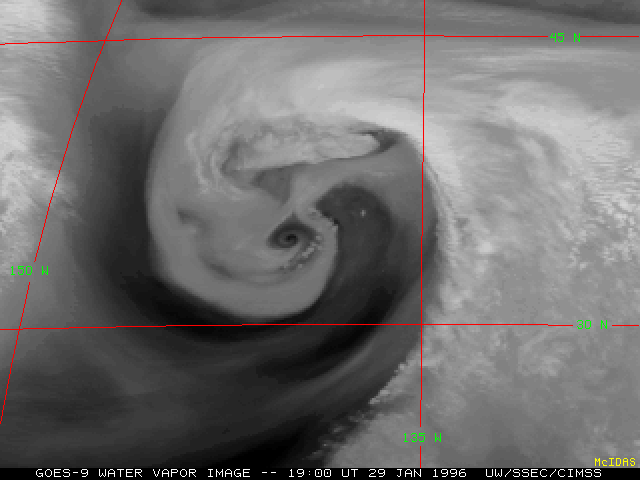
Water Vapor Imagery Tutorial

Water Vapor Imagery Tutorial

| 
|
Left: GOES-9 water vapor image showing an extratropical cyclone over the eastern North Pacific Ocean on 29 January 1996 (7 days after GOES-9 became fully operational at 135 W longitude). Ribbons of dry (dark) and moist (light gray) air are seen to be making complete revolutions into the center of the cyclonic vortex; this indicates "closed" wind fields within the middle and upper troposphere, and signals the beginning of the occlusion stage of cyclone development. Right: Corresponding water vapor tracked winds for this case (about 4 hours after the image on the left).
Introduction & history | Radiative transfer concepts | Forecasting applications
|
|